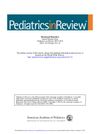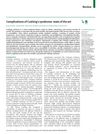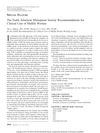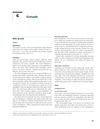Bone Health - Running: Can You Outrun Your Past?
June 2019
in “
Medicine and science in sports and exercise
”
TLDR The runner's bone injuries were linked to untreated Celiac Disease and low energy availability affecting her bone density.
In 2019, a case study was conducted on a 20-year-old female distance runner with a history of recurrent bone stress injuries. The patient had a history of Celiac Disease and reported fewer than 6 menstrual cycles per year. The diagnostic workup revealed a left sacral stress fracture and her injury history was significant. The final diagnosis attributed her recurrent bone stress injuries to low bone density, which was secondary to uncontrolled Celiac Disease during her adolescent bone mass accrual, and functional hypothalamic amenorrhea due to current low energy availability. The treatment included a regimen for sacral stress fracture, biomechanical assessment and rehabilitation, a medically modified training plan, monitoring by Sports Nutrition, and a discussion about treatment with transdermal estrogen.





